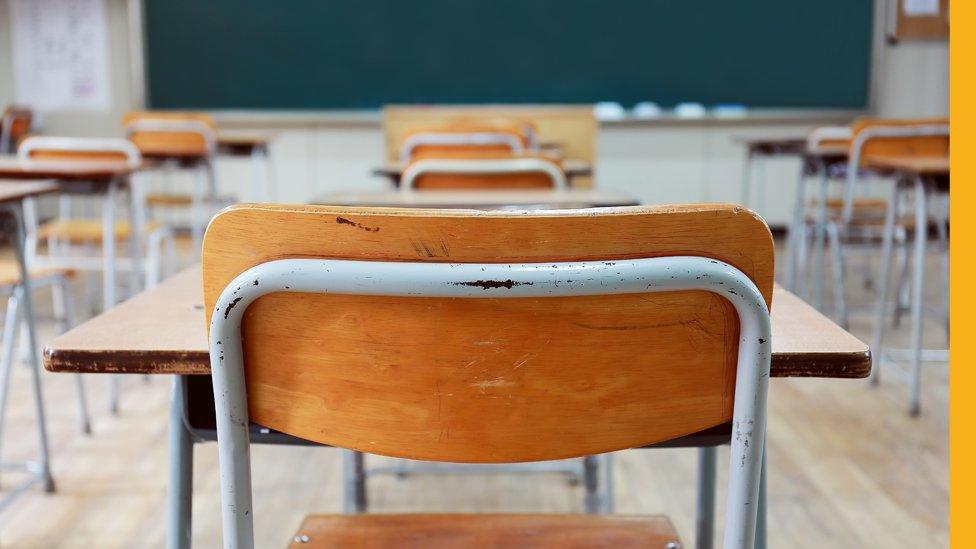School attendance and absence: The facts
- Published

The overall pupil absence rate is 4.5%, according to the latest figures from the Department for Education. One in 10 of those school children are classed as "persistently absent".
A persistently absent child is one who misses school for at least 10% of the time.
Secondary schools had a higher rate of persistent absence than primary schools. And overall, unauthorised absence, whether persistent or not, also increased.
Such statistics are just one of the reasons the BBC Stories team decided to look behind the numbers to make a series of films about why children don't attend school.
Taking to the streets in cities across the country, the team asked children themselves why they skipped classes. They gave a range of reasons including anxiety, depression, bullying and having little interest in the subjects they are taught.
Many said they wanted more support at school and some wished they could go back and "just start all over again".
'School's dead man, it's the same lessons every day'
According to the Department for Education's latest statistics, sickness was the main reason for absence in the autumn 2016 and spring 2017 terms. But illness rates remained the same as the previous year at 2.7%. Unauthorised absences, however, rose, including unauthorised family holidays.
It is important to note that overall school absences in England declined since the same period a decade earlier, as did the percentage of pupils who were persistently absent.

Bath and North East Somerset is one of England's wealthiest local authorities
But what's most surprising is where truancy was at its highest. While high deprivation indicators based on health, crime, education and crucially income are commonly linked to high truancy, a closer look shows this isn't necessarily the case.
Bath and North East Somerset is one of England's wealthiest local authorities, according to deprivation indices, but it had one of the highest levels of truancy in 2015 to 2016.
At the other end of the scale Manchester, a city which ranks highly on deprivation levels, had one of the lowest levels of truancy.

Manchester had one of the lower levels of truancy
If you compare middle income areas, again there are contrasts. Norfolk and Herefordshire are very similar overall when you look at health, crime, education and income but the truancy rate in Norfolk in 2015 to 2016 was much higher than in Herefordshire.
So, how reliable is the data? Pupil absence in England is measured at local authority level and deprivation by district so we can only look at the picture as an average with variation within each area.
Wales, Scotland and Northern Ireland record pupil absence in different ways.
In Wales, overall absence increased in 2016 to 2017 from the previous year - unauthorised absence and persistent absence also increased. However, persistent absenteeism in Wales was less than half of what is was eight years earlier.
In Scotland, attendance rates are recorded only once every two years. In 2014 to 2015, the overall attendance rate improved since the previous report but the unauthorised absence rate also increased.
In Northern Ireland, the overall attendance rate in 2015 to 2016 remained unchanged from the previous year at 94.6%.
Neither Scotland nor Northern Ireland measure persistent absence.
- Published7 December 2017

- Published7 December 2017

- Published7 December 2017
